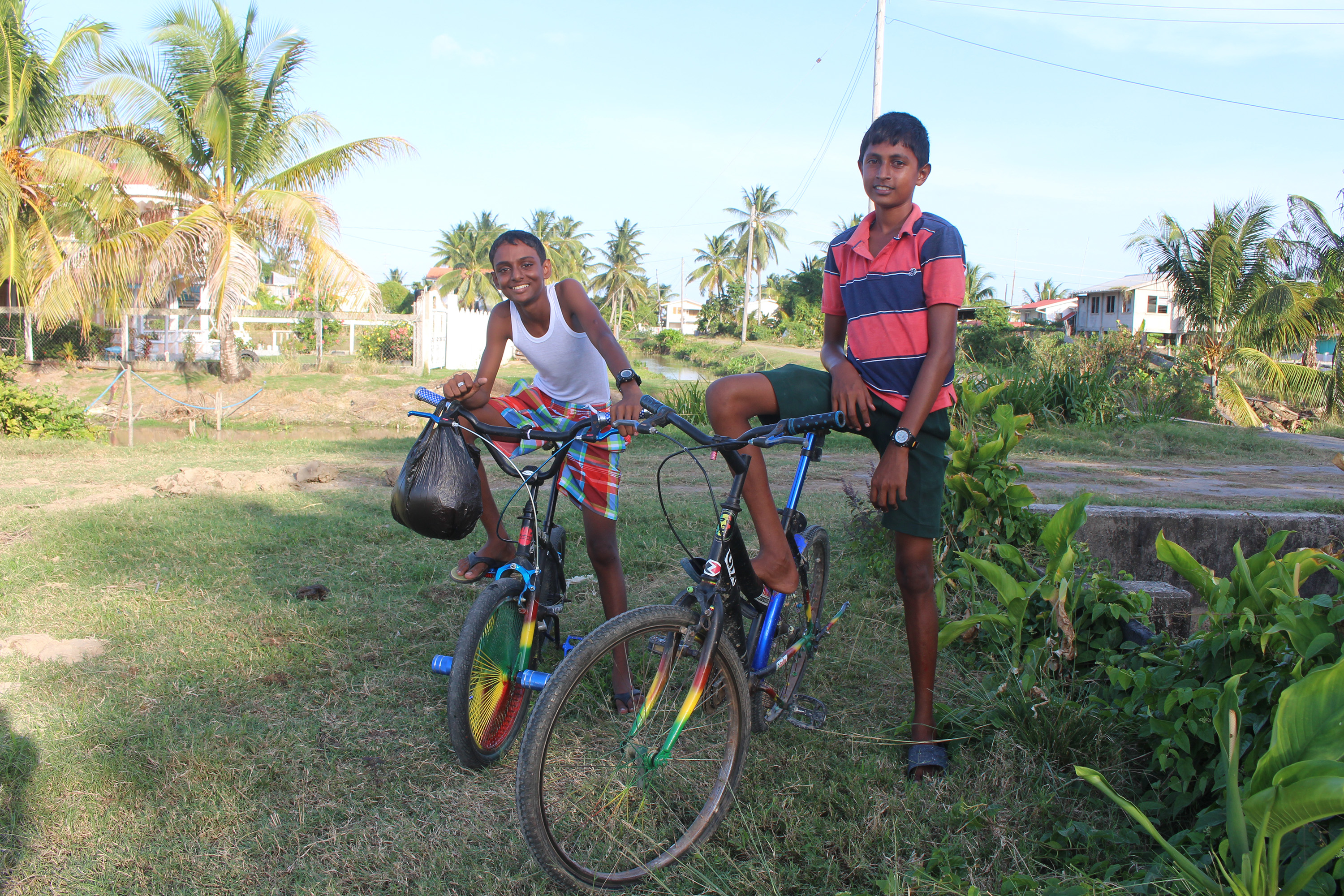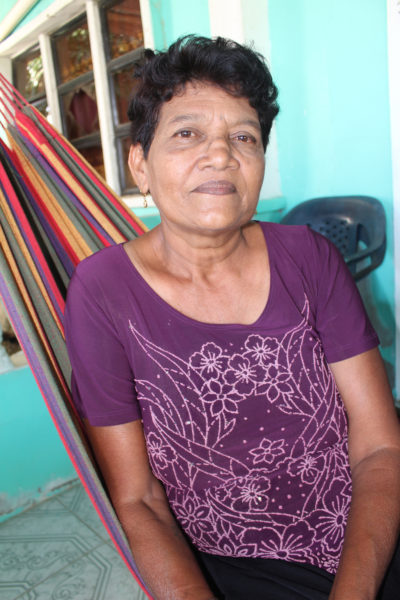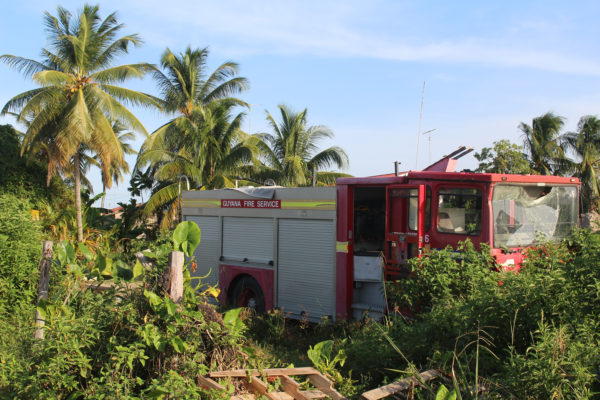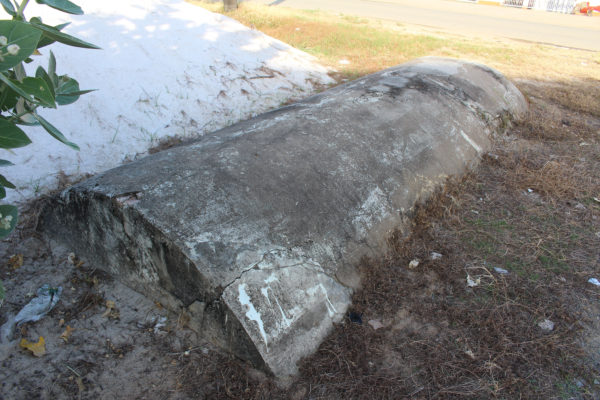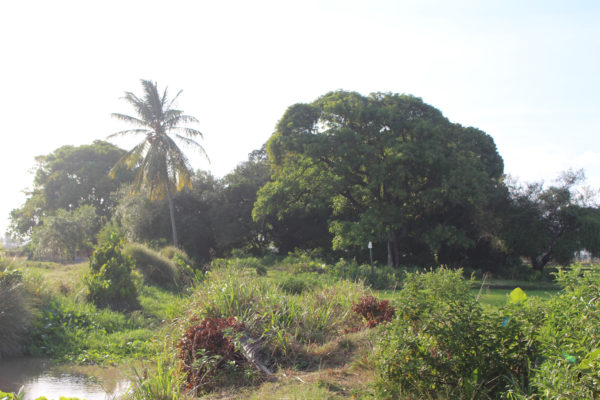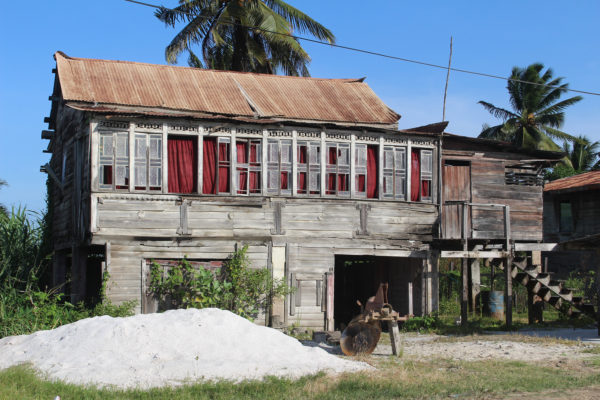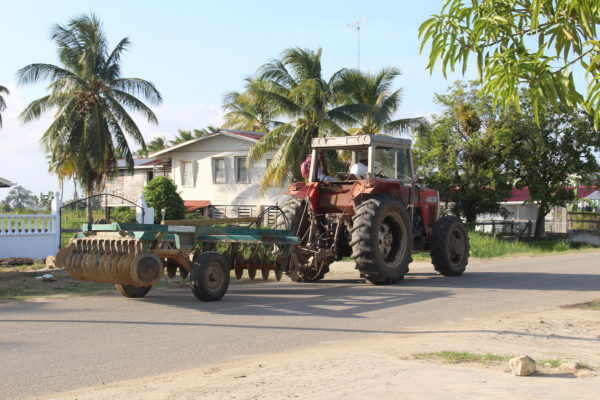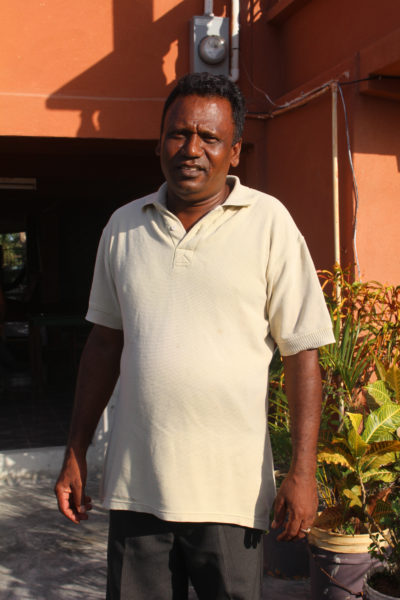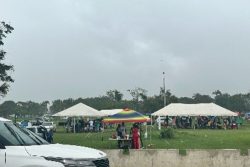Some 2,000 people live in the small village of Columbia, on the Essequibo Coast, which fits snug between Aberdeen and Affiance and the majority of them are Hindus, while a few are Muslims. The village is said to have been in existence since the late 1800s or the early 1900s.
From Georgetown, a visit to Columbia involves a bus/car ride to Parika, the ferry or a speedboat to Supenaam then a 20-minute bus/car ride to Columbia.
The first thing a visitor notices is the many pieces of farm machinery like combines and tractors parked in and outside of yards. Most of the men here are rice farmers.
Doodnauth Persaud, a rice farmer, was just putting his tractor in park when we caught up with him and he stepped down to talk with us before guiding us to his troolie shed behind his home that provided a cool shelter from the sun, situated as it is, just by the Essequibo River so that it captures that fresh air.
Doodnauth, now 54, was born at Columbia and has never lived anywhere else. Sometimes his visits take him overseas but he always returns.
“Columbia is very peaceful. Most people here are farmers. Loving people live in this village,” Persaud said. Most Sunday mornings, he said, would find him at the lone place of worship in the village, a Mandir.
Persaud noted that the way rice is planted and harvested now is much different from decades ago. “Long time you had to cut with knife and plough with bulls. Now we get combines and tractors. Now you can even go America while yuh rice ah cut,” he added.
However, he had a gripe with the fact that farmers are currently being paid $2,300 or less per bag of paddy ($2,300 is paid for the highest grade of paddy). He said it should be $4,000, but even $3,000 per bag would be much appreciated.
His wife, listening in, added that the unemployment rate is really high on the coast and during a recent visit to the hospital she saw a few young men hailing from different villages on the coast hospitalized because they had ingested poison. She even recalled two deaths from two nearby villages. She believes if more jobs are provided there will be a drop in the persons contemplating suicide.
They had no other complaints and find living in Columbia comfortable. They purchase groceries from a supermarket in Affiance, and fruits and vegetables from Bush Lot, the village before Anna Regina and a five-minute drive from Columbia.
Savitri Narine, originally from Charity, moved to Columbia after getting married at the age of 15; her husband was just 17 years old. According to the woman, a few visits to relatives in the village contributed to her meeting her husband and she didn’t want to leave after that.
“Most people living here are family. Everybody live nice here. This Columbia, people really, really good. If something happen to somebody, everybody deh out,” she said.
At the time of our meeting, Narine was watching the Dr Phil Show. She has cable, she said, with fifty plus channels; before cable she barely managed a few channels with bad reception.
According to her, a few persons in the past who asked her address affiliated the community with drugs because of the similarity of the village’s name to the country Colombia, infamous for its drugs and cartels. She insisted that the Columbia she lives in is nothing of that sort. “Drugs, crime? Not this place, not here at all,” she stated.
Her only wish is for her grandchildren to get a cricket ground to play on.
Columbia is also home to former Region Two chairman (2011 – 2015) Parmanand Persaud. Currently, Persaud is a rice farmer and a Justice of the Peace and Commissioner of Oaths to Affidavit since 1996.
He was also born in Columbia and confirmed the early existence of the village, noting that his great-grandfather came from India sometime between 1906 and 1912 and worked on the Columbia Sugar Estate.
Though there’s nothing that remains from the factory, there is an area which the locals call ‘Building’. This was where the broiler was situated, according to village elders. Today ‘Building’ has a clump of trees growing in its spot.
Meanwhile, Persaud said, according to the elders, Columbia has a “Dutch tomb”. Asked about Dutch tales that may be related to the ‘tomb’ he said, there were none. The ‘tomb’ is situated just outside the mandir. He recalled sitting on it when he was a boy and waiting for friends to arrive so they could go into the service together. Back then, he said, the ‘tomb’ (a sort of barrel-shaped concrete structure) was high up off the ground and his feet hung from it. Today, soil has filled up around it is less noticeable.
“It’s a very peaceful village. You park your bicycle on the road and tomorrow morning you can go pick it up; it’s still there. You don’t hear persons quarrelling, fighting and cursing,” Persaud said.
“We have treated water coming from Lima further down the coast. We have a health post here where we have frequent doctor visits. We have a telephone service. People like to plant their farms and they have lots of cattle. Lots of people have their own ducks and yard fowls and there are lots of coconut trees around. The ladies here love planting flowers…”
On the downside, Persaud said, “Most of the landline phones are not working and despite many complaints, GTT representatives are not looking into it.
“We need development as in proper access roads for farmers. We need better prices for our paddy. We need to have more input into the rice industry. We need to be given more support because rice farming is one of the key things in the economic system.”
Leaving Persaud, the World Beyond Georgetown met two teenage boys, Nandesh Jagernauth and Hairaj Gobin who were on their way to another village to play sports at the ground there but stopped to give directions to ‘Building’ before we prepared for the return trip.
